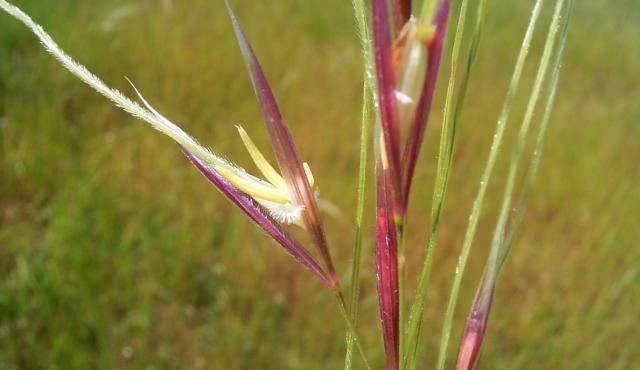


Chilean Needle-grass
Nassella neesiana
Dense, arching tussocks with leaves to 30 cm long and 5 mm wide, flat and strongly ribbed on their upper surface, with leaf edges that are rough to touch. Flowering stems to 1 m high. Spikelets in loose clusters to 40 cm long are distinctively purplish when young.
| Details | |
|---|---|
| Flora Type | Grasses |
| Distinctive Features | The sharp-pointed seeds easily attach to the coats of animals, clothing and machinery, aiding its spread. |
| Biology | Perennial. Poor soils. Hardy species that survives fire, drought and frost. Stock avoid eating it, reducing farm productivity by as much as 50% during summer. It can produce thousands of seeds per square metre, which stay viable in the soil for many years. |
| Native Status | Introduced |
| Flowering Time | Sep-Feb |
| Taxonomy | |
|---|---|
| Phylum | Tracheophyta (Vascular Plants) |
| Class | Magnoliopsida (Flowering Plants) |
| Order | Poales |
| Family | Poaceae |
| Genus | Nassella |
| Species | neesiana |
Chilean needle grass is a declared noxious weed throughout Vic. It is also a declared weed of National Significance. It is threatening endangered native grasslands as well as productive pastures throughout significant regions of south-eastern Australia.
| Interesting Facts | |
|---|---|
| Similar Species | This weed can look very similar to native speargrasses Austrostipa spp. To distinguish, compare the seeds. Chilean needle-grass seeds have a raised crown (corona), a ridge of small teeth circling the awn (bristle), located at the junction of the seed and the awn. Austrostipa seeds do not have this feature. |
| Native Status | Introduced |